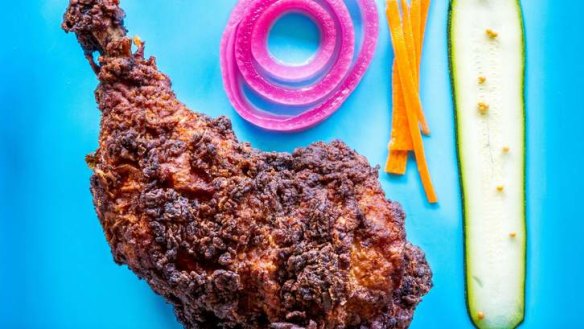Oat bran takes you only so far

I'm a bit disappointed no one picked up my little joke last week about the stack of new cookbooks on my shelf, books from people such as Daniel Patterson, Heston Blumenthal, Neil Perry and Pierre Dukan. You've probably heard of Dukan, but there's no question he's an outlier among these celebrity-chef gatherers and gastronomic chemists.
At the Canberra Times end-of-year meeting in 2013 with the other food contributors and the editors (again, this is a joke, we don't have meetings we just go out drinking), the leftover cookbooks are divvied up, so it's a free for all where only the quick and brave walk away without half a dozen books by Bill Granger. I was distracted so missed my chance and ended up with just one book and a slight stagger.
The book was The Dukan Oat Bran Miracle. To tell you the truth, I never read the story of these chefs; I'm only after the books for the recipes. But Dukan's book demands reading. Without spoiling the ending, in which I really was expecting that zombie attack that never came, it's filled with sage advice about humble oat bran, as the title suggests.
Happily, he doesn't get too technical - we are talking about the digestive system here, although he does leave me hanging in chapter three where he alludes to the ''constellation of alveoli'', and I think he's drifting off into a Dr Who tangent, but who knows? He never again seems to mention or explain this.
In basic terms, bran from oat is one of the few soluble forms of fibre; apple skins, apparently, are the other. This ability to dissolve readily in foods or your saliva creates a gelatinous mass that traps lots of components, then releases them gradually in your stomach and the engine room, the small intestine.
So why is this a good thing? It means that fats, sugar and proteins are released more slowly and some retained, along with water, through the entire event. Which is a good thing if you are diabetic, overweight, have high cholesterol or are prone to certain cancers.
A couple of tablespoons of oat bran each day, sprinkled over your cereal, in smoothies, breads, biscuits and the like, and you are on your way. It's cheap and tastes so much better than fish oil.
Dukan has come up with a mixture he calls the Dukan galette: 2½ tablespoons of oat bran, 2½⁄ tablespoons of creme fraiche, yoghurt or milk, and an egg or just the white. Whip it up, panfry it (non-stick or minimal fat) and eat one each day. You can make it into breakfast by adding fruit.
I would normally scoff, but in my new year health kick I'm trying things like this. I'm also experimenting with fermented foods in this quest for health.
First up, my own cultured butter. Buy cultured buttermilk to get started. Add it to cream and leave it out for 25-30 hours (less if it's hot) until it starts to get a yoghurty smell, then chill for another day - it will get thicker and thicker. This is essentially creme fraiche. You can use it on your Dukan galettes and as an alternative to cream in cooking, where it will not curdle.
To make butter, you churn the creme fraiche in a mixer. You end up with about 40 per cent butter and a lot of buttermilk. Cultured butter should be left at 18-22 degrees for a few days to mature, then chilled. The trick to a long shelf life is getting as much moisture, the buttermilk, out as you can before it's matured. So drain well after the butter has separated, then drain again and squeeze out, using gloves of course. Use an ice bath to wash off the excess and keep the butter cool.
The buttermilk carries the culture, so store it in the fridge and use it as the inoculum for the next cream. You only need about 50ml for each litre of cream and the rest is fair game. Make it into creme fraiche for those galettes, or use it for buttermilk fried chicken. Now there's a good dish.
Bryan Martin is winemaker at Ravensworth and Clonakilla.